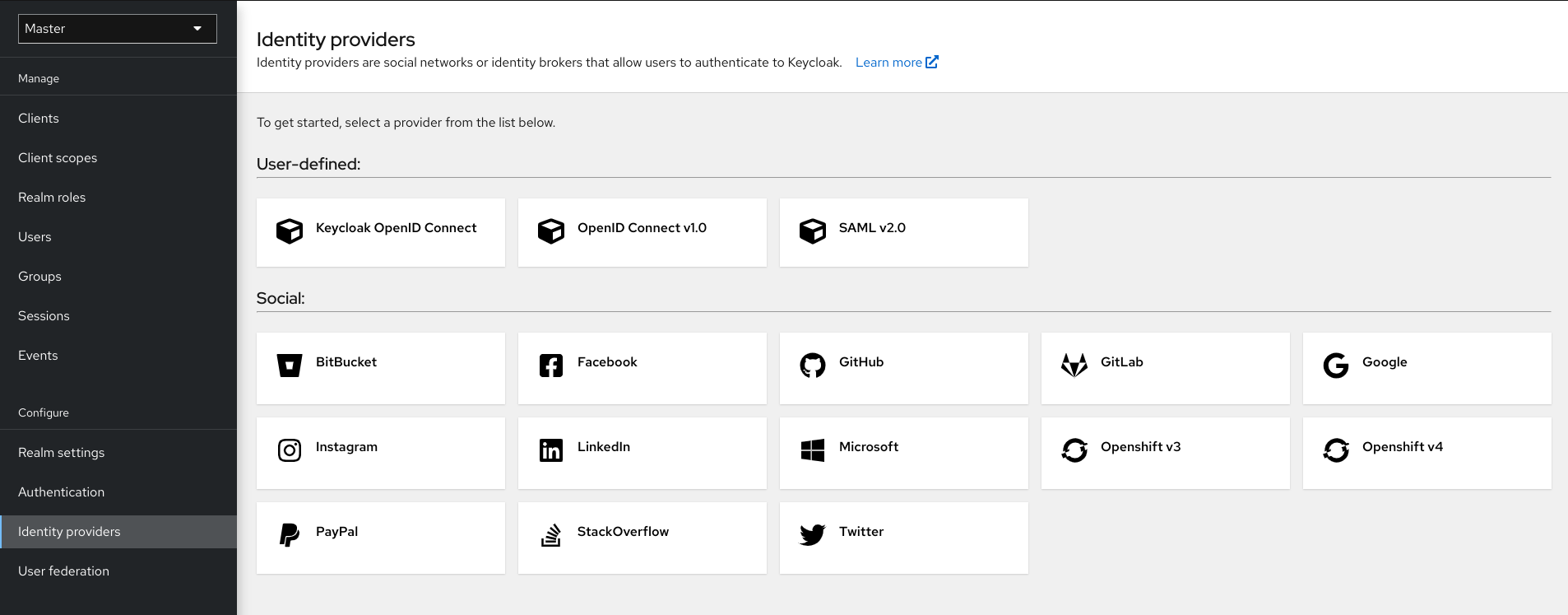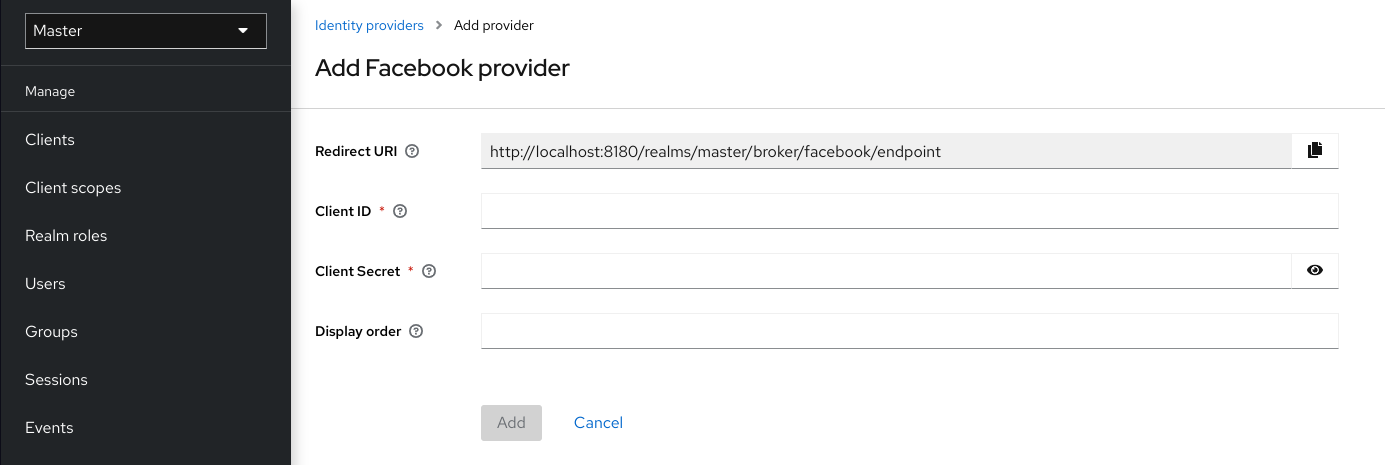General configuration
The foundations of the identity broker configuration are identity providers (IDPs). Keycloak creates identity providers for each realm and enables them for every application by default. Users from a realm can use any of the registered identity providers when signing in to an application.
-
Click Identity Providers in the menu.
Identity Providers
-
Select an identity provider. Keycloak displays the configuration page for the identity provider you selected.
Add facebook identity Provider
When you configure an identity provider, the identity provider appears on the Keycloak login page as an option. You can place custom icons on the login screen for each identity provider. See custom icons for more information.
IDP login page
- Social
-
Social providers enable social authentication in your realm. With Keycloak, users can log in to your application using a social network account. Supported providers include Twitter, Facebook, Google, LinkedIn, Instagram, Microsoft, PayPal, Openshift v3, GitHub, GitLab, Bitbucket, and Stack Overflow.
- Protocol-based
-
Protocol-based providers rely on specific protocols to authenticate and authorize users. Using these providers, you can connect to any identity provider compliant with a specific protocol. Keycloak provides support for SAML v2.0 and OpenID Connect v1.0 protocols. You can configure and broker any identity provider based on these open standards.
Although each type of identity provider has its configuration options, all share a common configuration. The following configuration options available:
| Configuration | Description |
|---|---|
Alias |
The alias is a unique identifier for an identity provider and references an internal identity provider. Keycloak uses the alias to build redirect URIs for OpenID Connect protocols that require a redirect URI or callback URL to communicate with an identity provider. All identity providers must have an alias. Alias examples include |
Enabled |
Toggles the provider ON or OFF. |
Hide on Login Page |
When ON, Keycloak does not display this provider as a login option on the login page. Clients can request this provider by using the 'kc_idp_hint' parameter in the URL to request a login. |
Account Linking Only |
When ON, Keycloak links existing accounts with this provider. This provider cannot log users in, and Keycloak does not display this provider as an option on the login page. |
Store Tokens |
When ON, Keycloak stores tokens from the identity provider. |
Stored Tokens Readable |
When ON, users can retrieve the stored identity provider token. This action also applies to the broker client-level role read token. |
Trust Email |
When ON, Keycloak trusts email addresses from the identity provider. If the realm requires email validation, users that log in from this identity provider do not need to perform the email verification process. |
GUI Order |
The sort order of the available identity providers on the login page. |
First Login Flow |
The authentication flow Keycloak triggers when users use this identity provider to log into Keycloak for the first time. |
Post Login Flow |
The authentication flow Keycloak triggers when a user finishes logging in with the external identity provider. |
Sync Mode |
Strategy to update user information from the identity provider through mappers. When choosing legacy, Keycloak used the current behavior. Import does not update user data and force updates user data when possible. See Identity Provider Mappers for more information. |